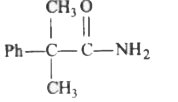Beckmann rearrangement.
Step-by-Step Solution for Beckmann Rearrangement
Step 1: Formation of Oxime
- The Beckmann rearrangement begins with the formation of an oxime from a ketone or aldehyde. The reaction involves the condensation of a carbonyl compound (R1C=O) with hydroxylamine (NH2OH) to form an oxime (R1C=N-OH).
Step 2: Protonation of the Oxime
- In an acidic medium, the oxime is protonated. The nitrogen atom in the oxime has a lone pair of electrons, which can be protonated to form a positively charged oxime (R1C=N^+(OH2)).
Step 3: Rearrangement
- The rearrangement occurs when one of the alkyl groups (R1 or R2) migrates to the nitrogen atom. This migration involves the breaking of the C=N bond and the formation of a new bond between the nitrogen and the carbon atom that was previously part of the carbonyl group.
Step 4: Formation of a Carbocation
- As the alkyl group migrates, a carbocation is formed on the carbon atom that was part of the oxime. This carbocation is stabilized by the presence of the adjacent nitrogen atom.
Step 5: Nucleophilic Attack by Water
- Water, acting as a nucleophile, attacks the carbocation to form a hydroxyl group (OH) on the carbon atom. This leads to the formation of a hydroxylamine intermediate.
Step 6: Deprotonation
- A proton (H+) is removed from the hydroxyl group, resulting in the formation of a neutral compound. This step may also involve the withdrawal of electrons from the oxygen atom to stabilize the molecule.
Step 7: Tautomerization
- The final step involves tautomerization, where a hydrogen atom shifts from the nitrogen to the carbon atom, resulting in the formation of an amide (R2C=O) and the release of nitrogen (N) as a byproduct.
Final Product
The final product of the Beckmann rearrangement is an amide (R2C=O) with the migration of the alkyl group from the original oxime.
---
- The Beckmann rearrangement begins with the formation of an oxime from a ketone or aldehyde. The reaction involves the condensation of a carbonyl compound (R1C=O) with hydroxylamine (NH2OH) to form an oxime (R1C=N-OH).
- In an acidic medium, the oxime is protonated. The nitrogen atom in the oxime has a lone pair of electrons, which can be protonated to form a positively charged oxime (R1C=N^+(OH2)).
- The rearrangement occurs when one of the alkyl groups (R1 or R2) migrates to the nitrogen atom. This migration involves the breaking of the C=N bond and the formation of a new bond between the nitrogen and the carbon atom that was previously part of the carbonyl group.
- As the alkyl group migrates, a carbocation is formed on the carbon atom that was part of the oxime. This carbocation is stabilized by the presence of the adjacent nitrogen atom.
- Water, acting as a nucleophile, attacks the carbocation to form a hydroxyl group (OH) on the carbon atom. This leads to the formation of a hydroxylamine intermediate.
- A proton (H+) is removed from the hydroxyl group, resulting in the formation of a neutral compound. This step may also involve the withdrawal of electrons from the oxygen atom to stabilize the molecule.
- The final step involves tautomerization, where a hydrogen atom shifts from the nitrogen to the carbon atom, resulting in the formation of an amide (R2C=O) and the release of nitrogen (N) as a byproduct.
The final product of the Beckmann rearrangement is an amide (R2C=O) with the migration of the alkyl group from the original oxime.
Topper's Solved these Questions
Similar Questions
Knowledge Check
Which of the following compounds cannot give Hofmann rearrangement?
A B
B C
C D
D
Which of the following species would not be involved in the Hoffmann rearrangement shown below?
 A
A B
B C
C DAll of the above are involved in the reaction.
DAll of the above are involved in the reaction.Di-tert-glycols rearrange in the presence of acid to give alpa-tertiary ketones. The trivial name of the simplest glycol of this type is pinacol, and this type of reaction therefore is named pinacol rearrangement (in this specific case, the reaction is called a pinacol-pinacolone rearrangement). The rearrangement involves 4 steps. one of the hydroxyl groups is protonated in the first step. A molecule of water is eliminated in the second step and a tertiary carbocation is formed. The carbocation rearranges in the third step into a more stable carboxonium ion via a [1,2] rearrangement. In the last step, the carboxonium ion is deprotonated and the product ketone is obtained.

What is R.D.S. of pinacol-pinacolone rearrangement?AI stepBII stepCIII stepDIV step
Cope rearrangement
View SolutionCope rearrangement
View SolutionAmong the following which one does not act as an intermediate in hofmann rearrangement
View SolutionIn which of the following reactions, rearrangement is possible ?
View SolutionDi-tert-glycols rearrange in the presence of acid to give alpa-tertiary ketones. The trivial name of the simplest glycol of this type is pinacol, and this type of reaction therefore is named pinacol rearrangement (in this specific case, the reaction is called a pinacol-pinacolone rearrangement). The rearrangement involves 4 steps. one of the hydroxyl groups is protonated in the first step. A molecule of water is eliminated in the second step and a tertiary carbocation is formed. The carbocation rearranges in the third step into a more stable carboxonium ion via a [1,2] rearrangement. In the last step, the carboxonium ion is deprotonated and the product ketone is obtained.


How many products obtained in above reaction?
View Solution

